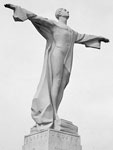Gulf Coast Heritage Association and Historic Spanish Point Museum
The Association's museum connects you with 5,000 years of human history in southwest coastal Florida by collecting, preserving, and interpreting the objects and traditions significant to the region's past. Visitors to the 30-acre archaeological site can experience prehistory by stepping inside "A Window to the Past," a unique exhibition about the gulf coast region's earliest people. Florida's pioneer life is explored by living history interpreters and by touring a home built in 1901, a citrus packing house, and Mary's Chapel. Strolling through one of the largest butterfly gardens in the region and the early 1900s formal gardens created by Mrs. Potter Palmer as part of her winter estate are a great way for visitors to learn about Florida's natural environments.
Educational offerings include field trips and hands-on activities related to pioneer life and archaeology. These docent led tours have served over 4,000 students per year since 1982.
